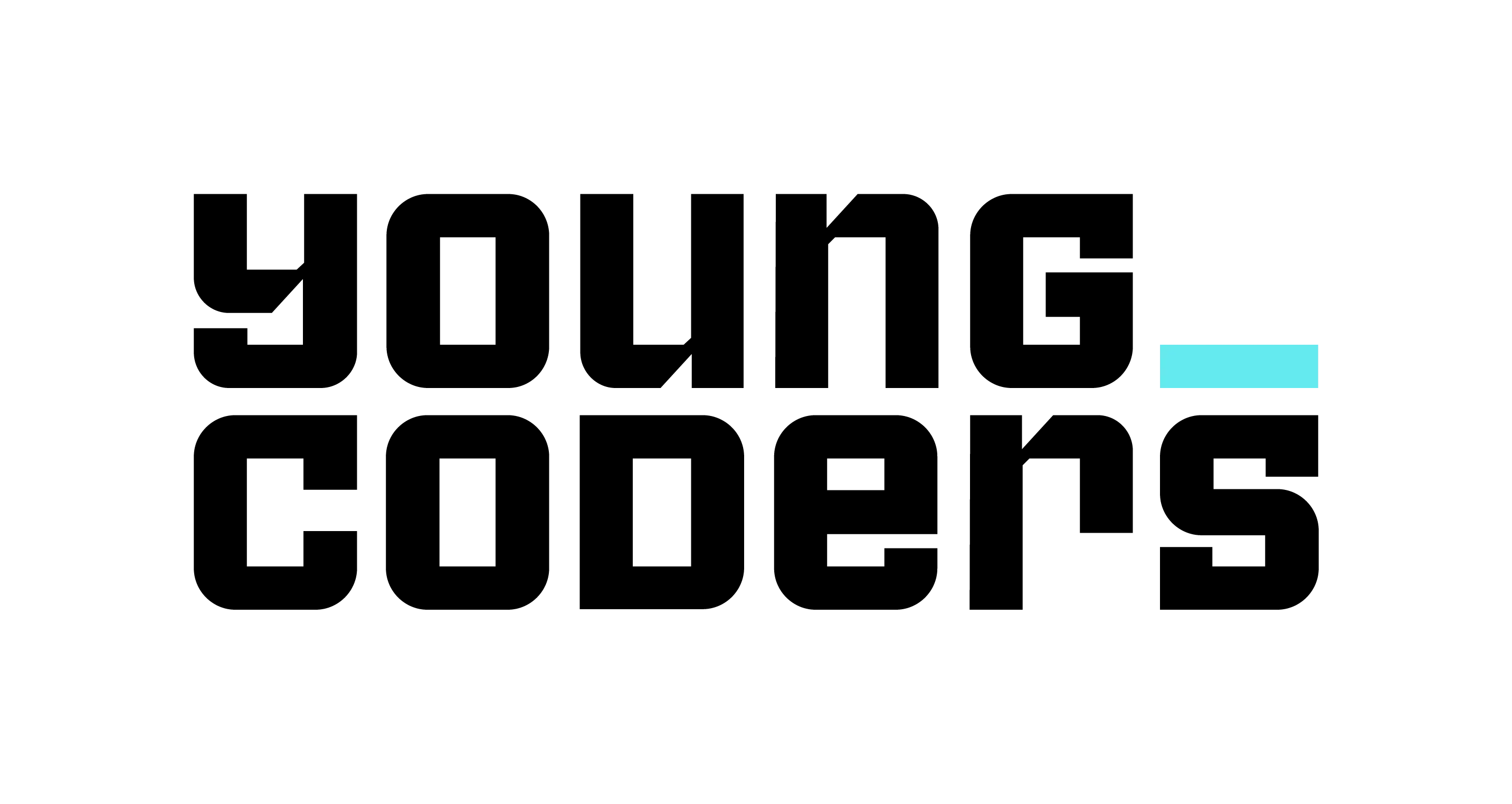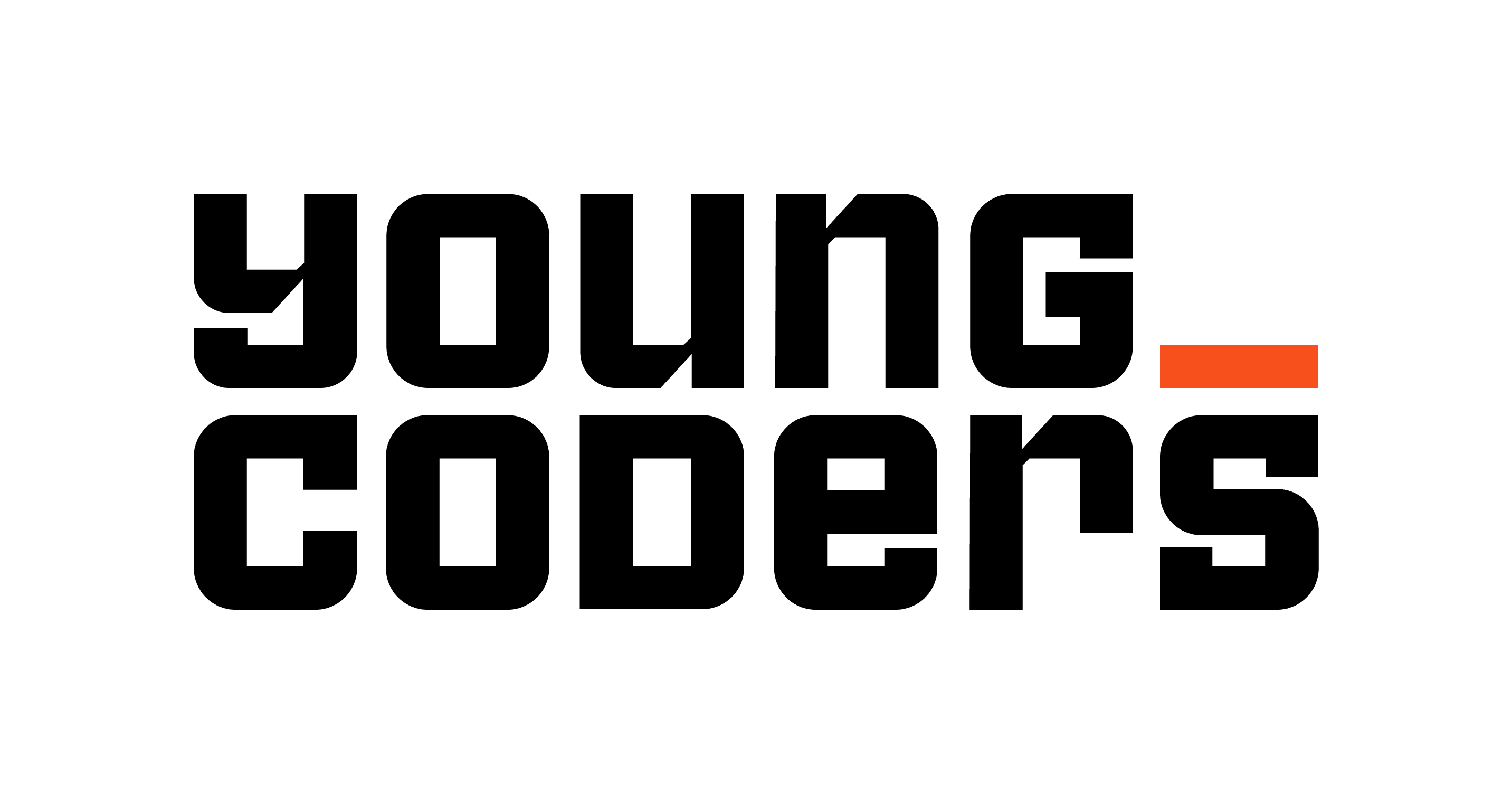Diversity and inclusion are high on the agenda in the Netherlands. As such, the Tech World cannot be left behind in making it work. But how do employers and employees within tech in the Netherlands experience diversity and inclusion?
To answer this question, anthropologist and development sociologist Maud Verploegen was commissioned by Young_Coders to conduct three months of research within several tech companies. Because of Covid-19 measures, much of the research consisted of online interviews of workers and employers. In addition, she interviewed people who had previously worked in tech and were working in the area of diversity and inclusion. Of course, she supplemented her data with online research.
This article is a translation by Young_Coders of the original research article, as published at: Students of Cultural Anthropology Journal.

What do we mean by diversity and inclusion?
Before we can dive deeper, it is important to define diversity and inclusion. Although diversity and inclusion are separate concepts, they are inextricably linked.
Diversity refers to the broadest sense of the word: every aspect that makes someone unique and who he, she, or it is is part of this diversity. Within tech companies, it mainly means that employees are not a homogeneous group (Krase and Uherek 2017, 3). As a result, diversity covers gender, sexuality, nationality, ethnicity, religious beliefs, personality, skills and more. Priya hits the mark here. She is a Dutch woman of color who is CEO of a tech company. Prior to her current position, she was an hr manager at many large international companies.
Many people think diversity has to do with ethnicity, culture, Black Lives Matter. But those are just parts of what makes a person unique. The whole profile of an individual is about: who are you as a person? What makes you unique? Do you have other perspectives? Do you have special talents? Do you actually have any talents? That’s diversity. – Priya
Inclusion, on the other hand, consists of everything that has to do with safety and acceptance in the workplace. It’s about relationships among colleagues, the company’s complaints procedure, being able to show who you are and want to be and more. Inclusion is also about including everyone, letting them participate and be part of decision making, without having to make concessions to who they are (Connaughton and Ptacek 2020, 45). Inclusion is thus not a synonym for assimilation. Indeed, in assimilation, a person must adapt to the dominant group and therefore cannot be himself.
Inseparable and all-encompassing
Diversity and inclusion are thus inextricably linked. One cannot exist without the other. Eva articulates this perfectly:
What you see is companies working hard to create more diversity among employees, but leaving inclusion out. Whereas it is inclusion that makes everyone feel at home in a company. However, when a company focuses solely on diversity, the staff turnover is high. One attracts the right employees, but they realize after a month that they do not feel at home and leave. You only achieve sustainable diversity by taking into account that different types of people also have different needs. – Eva
Eva is a Dutch woman of color who is CEO of a company working within HR, tech and diversity and inclusion. She and one of her friends founded a company to make social impact, as they felt themselves unrepresented in different sectors. This view was confirmed by other participants during the study. They indicate that diversity is so much more than gender or cultural diversity.
It is a comprehensive concept and therefore complicated and simple at the same time. It is easy to describe and conceptualize. However, in practice, it is difficult to see, get and keep (Doerfel and Gibbs 2020). This is because it is an ongoing process. Because diversity and inclusion change over time (Buzzanell 2020, 232).
Diversity and inclusion: a workplace theme
Many employers struggle with diversity and inclusion: it’s a sensitive topic, so they don’t always know how to handle it. In addition, it is difficult for them to capture all aspects of diversity (Doerfel and Gibbs 2020).
Juliette is a white Dutch woman and online manager who works for a large company and leads a team responsible for multiple websites. The company management values diversity and inclusion and organizes theme nights where employees of all levels can learn more about diversity. And how they can put this information to practice. While Juliette is very appreciative of the evening, she emphasizes the complexity of the topic:
Discussions took place on topics such as quotas. Those things are very complicated, so it was interesting to talk about them. – Juliette
Juliette was not the only one to bring up the sensitivity of this topic. Every participant in the survey indicated that this particular topic is very sensitive. It is therefore common for people to become emotional when talking about issues related to diversity and inclusion.
This led our researcher to understand that, precisely because of the sensitive nature of the subject, evidence based knowledge is necessary. Yet diversity and inclusion are so personal that everyone is affected. Therefore, it can feel like these concepts are not based on research but on opinions. Consequently, a number of survey participants indicated that an expert is needed for guidance when dealing with diversity and inclusion.
Active and passive diversity and inclusion
Juliette also shared how the theme night created awareness in her about “active diversity and inclusion. This includes managers, CEOs and/or companies actively promoting diversity and inclusion. This can be done in a variety of ways, such as adding it to your values on the website or creating a diversity and inclusion policy. One example Juliette gave was about job application forms and whether those texts were inclusive of different types of people. Using the knowledge she gained from the diversity night, she analyzed how to make these forms more inclusive. It’s a different way of thinking that really appeals to her, but doesn’t always come naturally to her.
There is also “passive diversity and inclusion”. In doing so, the manager, CEO or company believes diversity and inclusion is important, but does not actively demonstrate it. Characteristically, they say, “everyone is welcome here.” This is not untrue, but it is also not entirely true, and this is often reflected in the lack of diversity in the workplace of the company in question.
Asha is of Dutch-Javanese-Surinamese descent and is a woman of color. During her career, she worked primarily with white colleagues. She is currently transitioning from sales to IT and has gone through several application processes to do so. During these interview processes, she notices a difference in companies’ approach to diversity and inclusion. There were companies that promoted active diversity and inclusion, but also many companies that promoted passive diversity and inclusion.
They say everyone is welcome, yes. But we’ve been saying that for 50 years, and in practice hardly anything has changed. The company I will be working for now has really named diversity as one of their core values. – Asha
Asha explains how companies that don’t really believe in diversity and inclusion or only in the passive version of it, make it the employee’s responsibility to “belong”. Often, this becomes apparent even during the application process. Because of the high demand for female tech employees, Asha is in the luxurious position of being able to choose between employers. And like other women, she uses this to choose a company that best suits her.
It’s funny: diversity is always a topic during my job interviews. During one conversation I had to start talking about it and during the next conversation they did. I am actually always confronted with the fact that I am not white. During a job interview at a company with white staff, they asked me if I would fit in. That’s just funny, because I really know what I look like myself. So: on a work level, I fit in, but no, I don’t have the same skin color. – Asha
But even when a company, CEO or manager only adopts a passive form of diversity and inclusion, it is not a given that they will hold employees accountable to “belong”.
Ellen, a white Dutch woman with a Jewish background who is CEO at a tech company, takes an approach in between. She believes that employees are responsible when they need something extra or an adjustment to the standard. This could include medical chairs, dietary requirements, or certain days off. It is then up to the employee to notify her/his/their manager. She (Ellen), in turn, is then responsible for complying with these wishes so that employees feel as good as possible and, as a result, can do their jobs as well as possible.
Cultural Sensitivity
During the survey, it was found that employees and employers are generally on the same page when it comes to diversity and inclusion, although there are differences in how the topic is approached in the workplace. The active and passive form of diversity and inclusion is one example. Another example is that some of the employees lack the skill of “cultural sensitivity” from their employer. Cultural sensitivity refers to awareness of differences between cultures. In this context: the difference between employee needs associated with culture or ethnicity. Of course, there are other forms of sensitivity, such as gender sensitivity, but this did not come up during the interviews.
It’s a man’s world
Moreover, there was a clear difference between men and women during the interviews. Many of the men with whom our researcher spoke considered diversity and inclusion important, but not a priority. This does not mean, that they do not experience prejudice about other aspects of their identity, such as ethnicity, as Li Jie explained to me. He is a Dutch-Chinese man with Chinese parents.
In other industries, he often had to deal with racist comments from customers. Within tech, however, he has only experienced “positive” stereotyping, which works in his favor.
Often people assume that I work hard and that I can be trusted purely because I am Chinese. But it could have been different. Personally, I think it’s something positive, so I can honestly take advantage of that. – Li Jie
In general, men are less involved in diversity and inclusion than women. Outside of work, women are also more likely to be involved in activities aimed at creating more diversity and inclusion and awareness about it.
The tech world is a place where men are dominant. Women have had to “deal” with this by continually clarifying or proving to themselves that they have the same knowledge as their male counterparts. These behaviors are categorized as microaggressions: minor aggressions related to ethnicity, gender, or some other (fixed) category to which a person belongs. They are therefore closely associated with racism, sexism and discrimination.
Microaggressions are subtle, usually automatic, and nonverbal communications, which we call “put downs” (Pierce et al. 1978, 66). These “put downs” are usually directed at minorities or marginalized groups and can be seen as everyday insults. It is important to note that these “put downs” happen unconsciously and automatically (Solórzano et al. 2000).
Because of the invisible nature of these “put downs,” the environment does not notice them and they are dismissed as innocent (Sue 2010). On top of that, the one with power co-determines microaggressions, so minorities or marginalized groups are constantly trying to figure out the real meaning of communication (Sue et al. 2007).
The aggressors do not realize their part in creating and sustaining inequalities or creating psychological dilemmas for minorities and marginalizing colleagues (Sue et al. 2007).
This is something that happened to both white women and women of color, since tech is a white and male-dominated world. Sophie gave an example of microaggression based on gender: she experienced a lot within one company. Many of her male colleagues explicitly explained everything to her, even when she did not ask. With her male colleagues, they did not.
I felt like they thought they were being helpful, but it annoyed me. It made me feel like they assumed I didn’t understand anything at all. It made me feel like they thought I was stupid. Because that’s the premise, like: “Oh, I have to explain everything?” Instead of just listening to what I actually asked. – Sophie
And although Sophie was often annoyed by this, it was not the reason why she left the company in question. The other influence in leaving the company was the age difference between her and her colleagues. As a result, there were fewer similarities between them and fewer topics to talk about. This made her feel that she could not build a bond with her colleagues, which she had managed to do in other companies.
It is not only by virtue of gender that microaggression can be visible: Sasha also experienced it by virtue of her ethnicity . This varied from asking if anyone could touch her to provoking questions about Black Pete. As a black Dutch woman, Sasha has worked in a variety of industries. Now she works on projects for the digital government and has gained a lot of experience within the field.
Sexism
Microaggression is not the only form of sexism women face. Meryem is a Turkish woman who moved to the Netherlands for work and love. Not long ago, she changed her career path toward tech. During the survey, she talked about her salary. That she is paid less than one of her male colleagues in the same position. When she brought this up, management made no attempt to acknowledge or change the problem. They informed her that they would talk about it again after six months. Meryem told our researcher that it will be a “dealbreaker” if nothing changes then: she wants to be treated equally.
For me, the important thing now is to have a new position and just gain experience through work. But at the end of these six months, this is the deciding factor for me. If my salary doesn’t change, that weighs heavily in my decision whether I want to continue or change jobs after all. – Meryem
No vacuum
Gender, ethnicity, nationality and other factors are all aspects of an individual’s identity. Therefore, the situations described above are not isolated cases. They do not take place in a vacuum (Mohanty 1988; Lutz 2015; Stoler 1997; Abu-Lughod 2013). This is something that all participants in the study, men and women alike, made clear. Every aspect of their being affected the way they are accepted or fit within a company. Intersectionality, or crossroads thinking, therefore, cannot be ignored within the theme of diversity and inclusion.
The women indicated during the survey that they do not mind working with only men and certainly would not prefer to work in a company with only women. They pointed out that a mix of both genders works best because it creates the best dynamic. Male participants also mentioned that the dynamics are better when there is no homogeneous group working in the workplace. Men only results in a macho culture where people compete and do not learn from each other’s qualities. In contrast, an environment with only women leads to gossip and backbiting. Both dynamics balance each other when both genders are represented in the workplace.
Benefits of diversity and inclusion
When asked if they see the value of diversity and inclusion, all respondents answered a resounding “yes.”
They find diversity and inclusion valuable for several reasons, including better IT products, a more pleasant work environment, employees who stay longer and higher productivity.
The biggest reason for better IT products is the “bias” argument. That is, more diversity leads to less bias. Each person, influenced by personality and life experience, sees the world differently, and in a diverse group, different perspectives illuminate different problems and solutions.
Peter is CEO of a tech company that operates within the education sector and he highlights this:
First, software and technology are increasingly part of products. The moment you work with many different people to make these products, more different people can also use the products. In the end, that’s exactly what makes it a better product. – Peter
When there is inclusion in addition to diversity, employees feel safer and therefore work better. When someone feels safe and satisfied with his/her/their workplace, he/she is better at the work that person does. They have more time and space to develop and grow. This results in better IT products, higher productivity, as well as employees who stay with the same company longer. This in turn leads to more innovation and higher revenues (Hunt, Layton, and Sara Prince 2015; Winning 2018).
Conclusion
Diversity and inclusion are difficult but extremely important topics. It is a delicate subject that companies, CEOs and managers approach in two different ways: actively and passively. Examples of active diversity and inclusion include (core) values on the website and creating a diversity and inclusion policy.
Passive diversity and inclusion, in practice, means that a company, CEO or manager wants everyone to feel welcome and doesn’t mind adjusting the workplace accordingly. However, they do not encourage it in an active way.
It starts with awareness, and ends with better results
The technology sector employs mostly white males. Therefore, women experienced different forms of sexism. Most of these consisted of microaggressions based on gender or ethnicity, but there was even one participant who was not paid equally compared to her male colleagues.
Overall, men were less concerned about diversity and inclusion compared to women. However, this does not mean that men did not consider diversity and inclusion important.
The topic is rightly considered important, as there are many benefits of diversity and inclusion, including better IT products, better work environments, employees who stay longer and higher productivity.
Diversity and inclusion policies are essential for future-proof businesses. It’s time for active diversity and inclusion.


